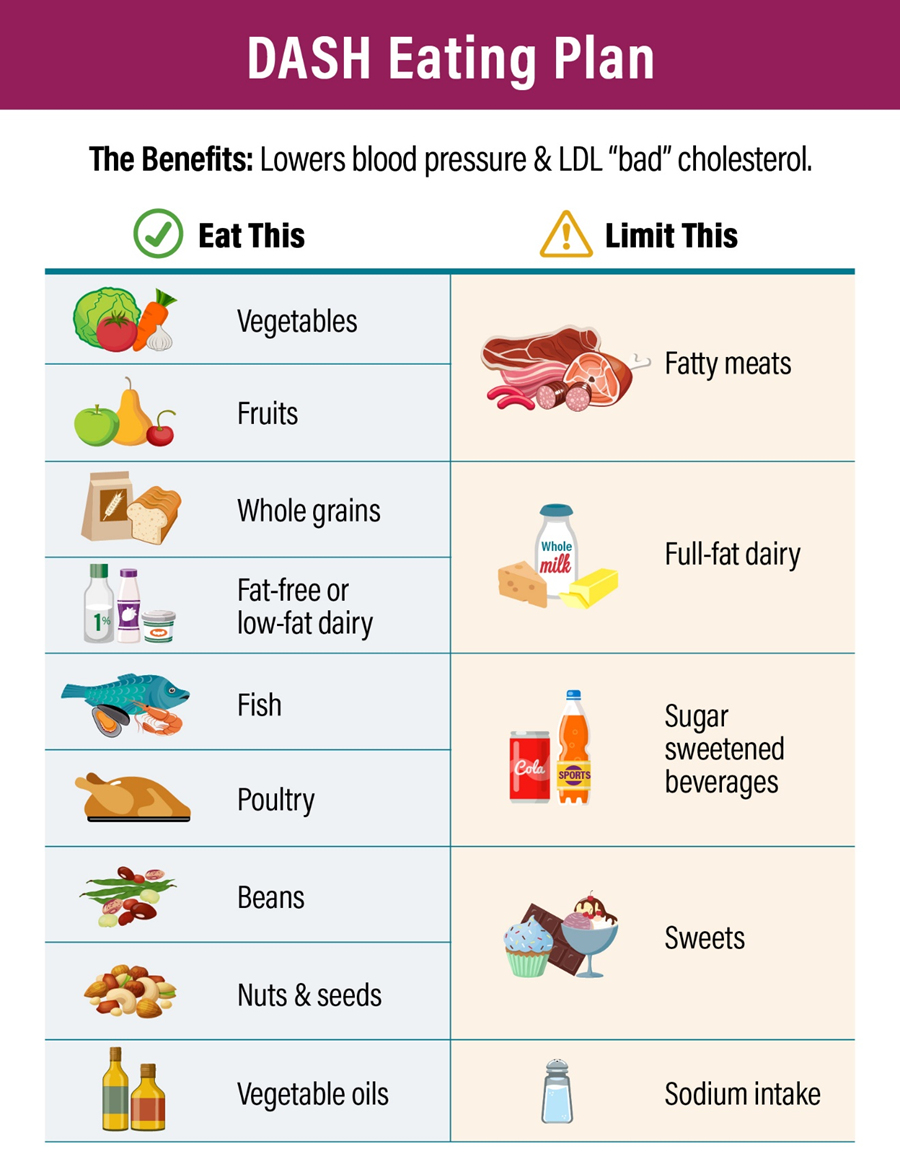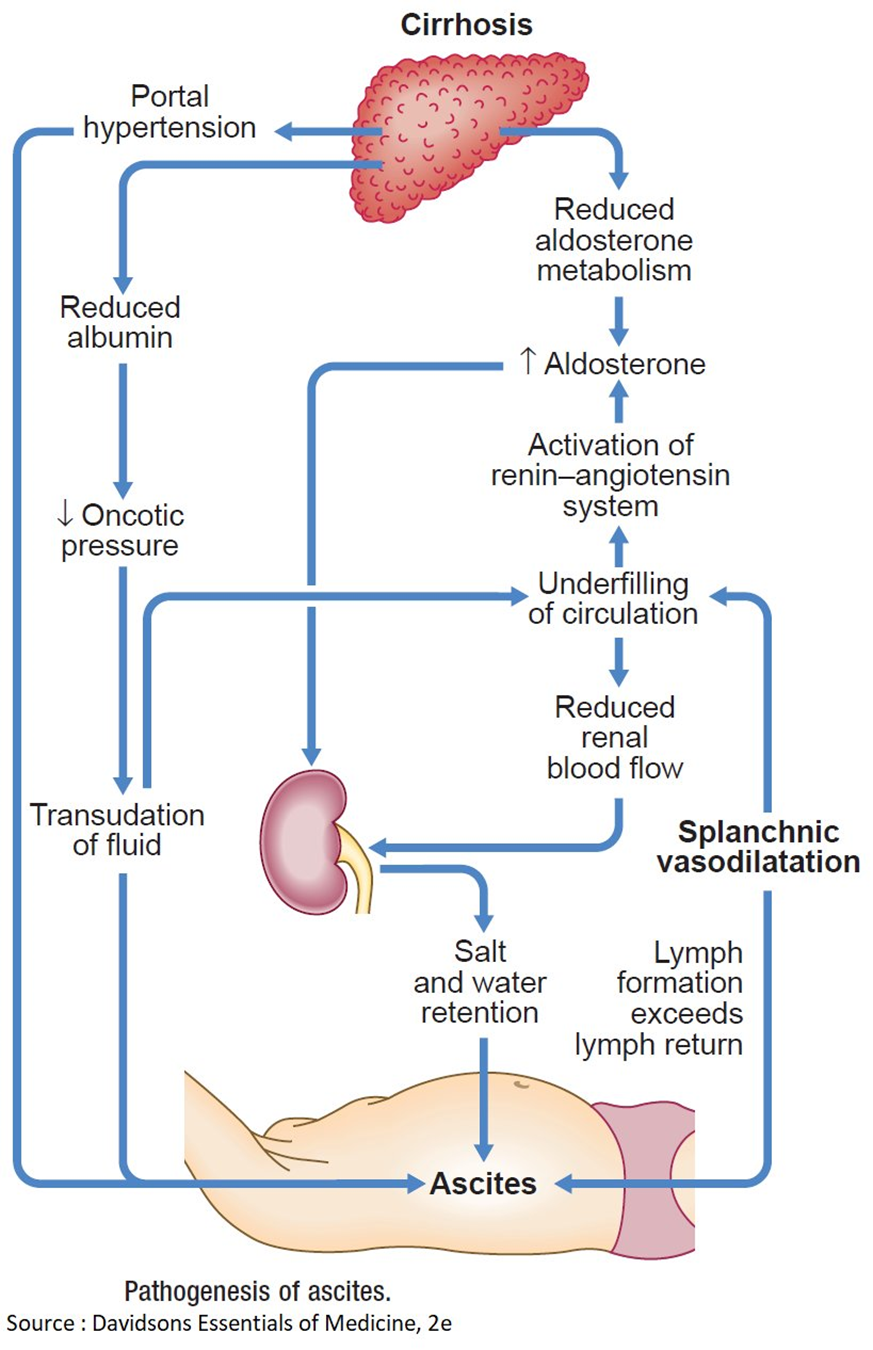The nurse is evaluating a client's understanding of diet teaching about the DASH (Dietary Approaches to Stop Hypertension) eating plan. Which behavior indicates that the client is adhering to the eating plan?
Carefully cleans and peels all fresh fruit and vegetables
Uses only lactose-free dairy products.
No longer includes grains in daily diet.
Enjoys fat-free yogurt as an occasional snack food
The Correct Answer is D
A. Carefully cleans and peels all fresh fruit and vegetables:
While cleaning and peeling fresh fruits and vegetables may contribute to food safety, it is not a specific indication of adherence to the DASH eating plan.
B. Uses only lactose-free dairy products:
The DASH eating plan encourages the consumption of low-fat or fat-free dairy products. Using lactose-free dairy products may be necessary for individuals with lactose intolerance, but it is not a specific behavior related to the DASH plan.
C. No longer includes grains in the daily diet:
The DASH eating plan includes whole grains as part of a balanced diet. Eliminating grains altogether is not consistent with the DASH plan, which encourages the consumption of whole grains.
D. Enjoys fat-free yogurt as an occasional snack food:
This is the correct answer. The DASH eating plan recommends the inclusion of low-fat or fat-free dairy products as part of a heart-healthy diet. Choosing fat-free yogurt as an occasional snack aligns with the principles of the DASH plan, which emphasizes low-fat dairy options.

Nursing Test Bank
Naxlex Comprehensive Predictor Exams
Related Questions
Correct Answer is A
Explanation
A. Minimize symptoms by wearing loose, comfortable clothing:
This is the correct answer. Wearing loose, comfortable clothing can help alleviate pressure on the abdomen, reducing the likelihood of exacerbating GERD symptoms.
B. Sleep without pillows at night to maintain neck alignment:
This recommendation is not specifically related to GERD. In fact, elevating the head of the bed or using extra pillows can be helpful in preventing acid reflux during sleep.
C. Adjust food intake to three full meals per day and no snacks:
It is generally recommended for individuals with GERD to have smaller, more frequent meals rather than three large meals. Eating smaller portions can help reduce the likelihood of gastric distention and reflux.
D. Avoid participation in any aerobic exercise programs:
Exercise is generally beneficial for overall health, but intense aerobic exercise immediately after eating may contribute to GERD symptoms. However, this does not mean avoiding all aerobic exercise. It is more appropriate to advise against vigorous exercise immediately after meals.
Correct Answer is D
Explanation
A. Hyperaldosteronism causing an increased sodium reabsorption in renal tubules.
Hyperaldosteronism is characterized by an excess of aldosterone, a hormone that regulates sodium and water balance. In cirrhosis, however, sodium retention is often related to other mechanisms such as portal hypertension and hypoalbuminemia, rather than hyperaldosteronism.
B. Decreased renin-angiotensin response related to an increase in renal blood flow.
Cirrhosis is more commonly associated with an activated renin-angiotensin-aldosterone system, leading to increased sodium and water retention. The increased renin-angiotensin response is a compensatory mechanism to maintain perfusion in the setting of cirrhosis and does not contribute to decreased renal blood flow.
C. Decreased portacaval pressure with greater collateral circulation.
This statement is not accurate. In cirrhosis, there is typically increased portacaval pressure due to portal hypertension, which can lead to the development of collateral circulation. However, this does not explain the edema and ascites seen in cirrhosis.
D. Hypoalbuminemia that results in a decreased colloidal oncotic pressure.
This is the correct choice. In cirrhosis, liver damage leads to decreased synthesis of albumin. Albumin plays a crucial role in maintaining colloidal oncotic pressure, and when it is decreased (hypoalbuminemia), fluid is more likely to leak out of blood vessels, resulting in edema. The same mechanism contributes to the development of ascites in the abdominal cavity.

Whether you are a student looking to ace your exams or a practicing nurse seeking to enhance your expertise , our nursing education contents will empower you with the confidence and competence to make a difference in the lives of patients and become a respected leader in the healthcare field.
Visit Naxlex, invest in your future and unlock endless possibilities with our unparalleled nursing education contents today
Report Wrong Answer on the Current Question
Do you disagree with the answer? If yes, what is your expected answer? Explain.
Kindly be descriptive with the issue you are facing.
